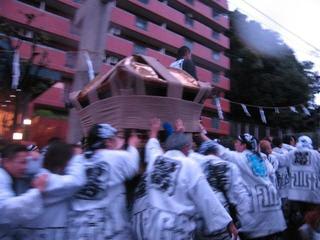① so~that S+V
② so that S+V
はよくでてくるもので、多分、ほとんどの人が間違うことはないでしょう。
①はとても・・・・なのでSVしたです。②はSVするようにという目的を表す副詞節になります。
例文を挙げときます。
①She is so pretty that I like her.
②We made that decision so that all people could get their satisfaction.
問題は、
③ ,so that S+V
を、どう解釈するかです。辞書にはこれに該当する開設は載っていない。しかしよく見かけるものである。
これの解釈は次の通り:S1+V1・・・,so that S2 +V2の形がでてきたら、これは重文であり、S1 はV1した、そして、S2はV2した、と訳す。要するにthatを消してみてもいいということである。これは、「技術英語構文辞典」(三省堂、富井篤編)のP432で確認したものである。
例文:
Its ruins, the campus of Kanazawa University until 1994, were opened to the public as a park for the first time in 450 years, so that citizens can walk around here,thinking of old days.(「英語で伝える日本」(三修社、伊藤通子著、澤井雅子訳)から引用)
② so that S+V
はよくでてくるもので、多分、ほとんどの人が間違うことはないでしょう。
①はとても・・・・なのでSVしたです。②はSVするようにという目的を表す副詞節になります。
例文を挙げときます。
①She is so pretty that I like her.
②We made that decision so that all people could get their satisfaction.
問題は、
③ ,so that S+V
を、どう解釈するかです。辞書にはこれに該当する開設は載っていない。しかしよく見かけるものである。
これの解釈は次の通り:S1+V1・・・,so that S2 +V2の形がでてきたら、これは重文であり、S1 はV1した、そして、S2はV2した、と訳す。要するにthatを消してみてもいいということである。これは、「技術英語構文辞典」(三省堂、富井篤編)のP432で確認したものである。
例文:
Its ruins, the campus of Kanazawa University until 1994, were opened to the public as a park for the first time in 450 years, so that citizens can walk around here,thinking of old days.(「英語で伝える日本」(三修社、伊藤通子著、澤井雅子訳)から引用)


















